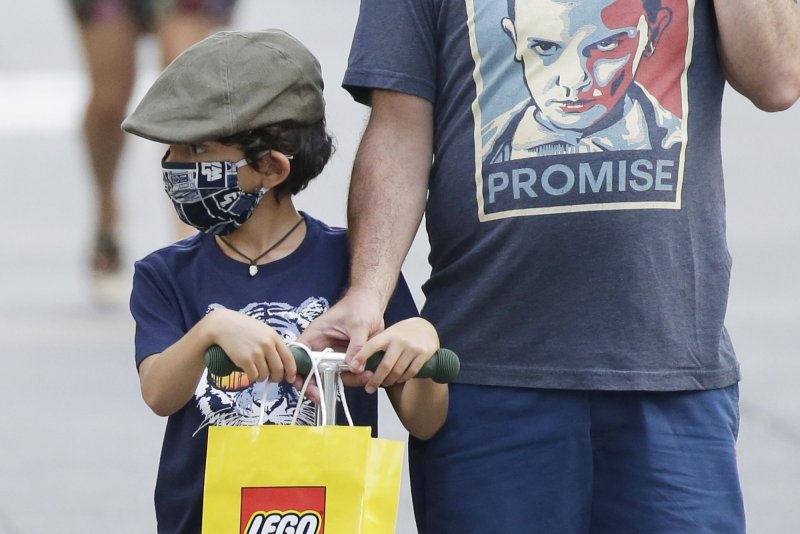
Study: Kids less likely than adults to be asymptomatic COVID-19 spreaders
by Brian P. DunleavySept. 14 (UPI) -- Adults are nearly 10 times more likely to be asymptomatic carriers of COVID-19 than children, according to an analysis published Monday by JAMA Pediatrics.
Just over 1% of children who had no outward signs or symptoms of infection tested positive for the virus after they were admitted to a hospital in Milan for other reasons, the researchers said.
Conversely, just over 9% of asymptomatic adults were found to have COVID-19.
"The data do not support that children may be asymptomatic carriers more than adults," study co-author Dr. Carlo Agostoni, a pediatrician at the University of Milan, told UPI.
The findings should allow Italian officials to "start the new scholastic year with a less pessimistic view" about the potential risks for spread in schools, he said.
Researchers have estimated that between 50% and 80% of individuals infected with the virus remain asymptomatic.
Meanwhile, symptomatic children may be up to 15% of those carrying COVID-19, according to an analysis from China published early in the pandemic.
The new JAMA Pediatrics findings are based on COVID-19 screening results for 214 patients at the Fondazione Ca'Granda Hospital in Milan. Northern Italy was the site of one of the worst outbreaks of the virus.
All 214 patients -- 83 children age 1 to 11 and 131 adults age 57 to 84 -- were screened for COVID-19 for precautionary reasons upon admission to the hospital between March 1 and April 30, despite having no symptoms, the researchers said.
One of the 83 asymptomatic children and 12 of the 131 asymptomatic adults tested positive for the virus, and none of them developed symptoms of infection within 48 hours of admission, the data showed.
This equates to an infection rate of 1.2% among asymptomatic children and 9.2% among asymptomatic adults, researchers said.
Eleven of the 12 adults who tested positive for the virus did so on the first test, the analysis said.
The findings indicate that children may not be not at higher risk than adults as asymptomatic carriers of COVID-19, meaning that they may not play a significant role as "facilitators of the spread" of the virus, the researchers said.
"We have to be on guard in any case," Agostoni said. "After summertime, we probably have higher percentages of carriers in Italy, particularly among those around 30 years [of age]."